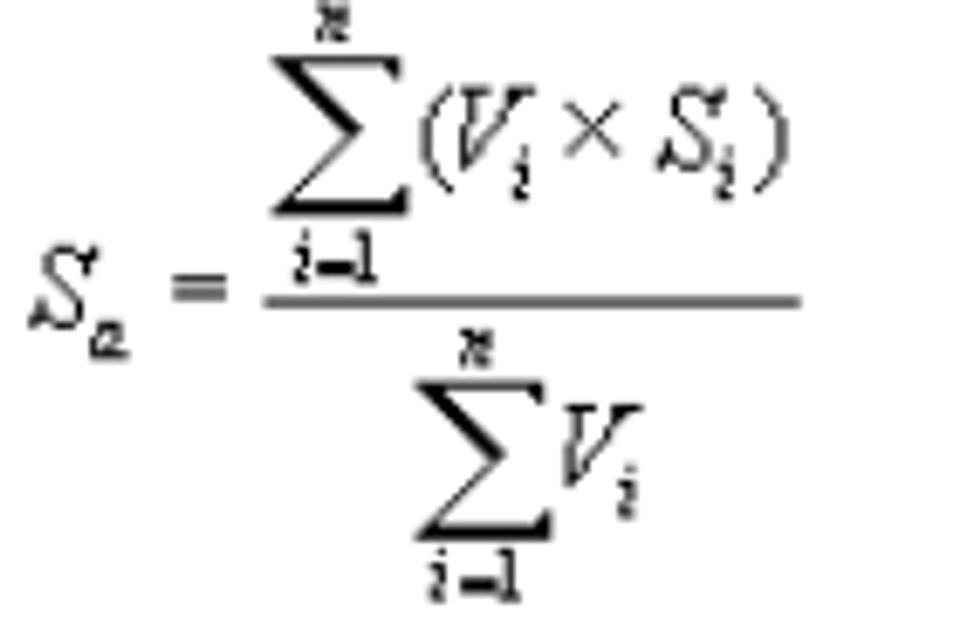Compliance Just Got Easier: Stay ahead of regulatory changes with instant notifications on updates that matter.
[]
[]
07/25/2021
...
80.205 How is the annual refinery or importer average and corporate pool average sulfur level determined?
[Editor’s Note: This section is removed and reserved effective January 1, 2022.]
(a) The annual refinery or importer average and corporate pool average gasoline sulfur level is calculated as follows:

Where:
Sa= The refinery or importer annual average sulfur level, or corporate pool average level, as applicable.
Vi= The volume of gasoline produced or imported in batch i.
Si= The sulfur content of batch i determined under § 80.330.
n = The number of batches of gasoline produced or imported during the averaging period.
i = Individual batch of gasoline produced or imported during the averaging period.
(b) All annual refinery or importer average or corporate pool average calculations shall be conducted to two decimal places.
(c) A refiner or importer may include oxygenate added downstream from the refinery or import facility when calculating the sulfur content, provided the following requirements are met:
(1) For oxygenate added to conventional gasoline, the refiner or importer must comply with the requirements of §80.101(d)(4)(ii).
(2) For oxygenate added to RBOB, the refiner or importer must comply with the requirements of §80.69(a).
(d) Refiners and importers must exclude from compliance calculations all of the following:
(1) Gasoline that was not produced at the refinery;
(2) In the case of an importer, gasoline that was imported as Certified Sulfur-FRGAS;
(3) Blending stocks transferred to others;
(4) Gasoline that has been included in the compliance calculations for another refinery or importer; and
(5) Gasoline exempted from standards under§80.200.
(e)(1) A refiner or importer may exceed the refinery or importer annual average sulfur standard specified in§80.195for a given averaging period for any calendar year through 2010, creating a compliance deficit, provided that in the calendar year following the year the standard is not met, the refinery or importer shall:
(i) Achieve compliance with the refinery or importer annual average sulfur standard specified in §80.195; and
(ii) Use additional sulfur credits sufficient to offset the compliance deficit of the previous year.
(2) No refiner or importer may have a compliance deficit in any year after 2010. Any deficit that exists in 2010 must be made up in 2011.
[65 FR 6823, Feb. 10, 2000, as amended at 67 FR 40182, June 12, 2002; 85 FR 78467, Dec. 4, 2020]
UPGRADE TO CONTINUE READING
Load More
J. J. Keller is the trusted source for DOT / Transportation, OSHA / Workplace Safety, Human Resources, Construction Safety and Hazmat / Hazardous Materials regulation compliance products and services. J. J. Keller helps you increase safety awareness, reduce risk, follow best practices, improve safety training, and stay current with changing regulations.
Copyright 2025 J. J. Keller & Associate, Inc. For re-use options please contact copyright@jjkeller.com or call 800-558-5011.
